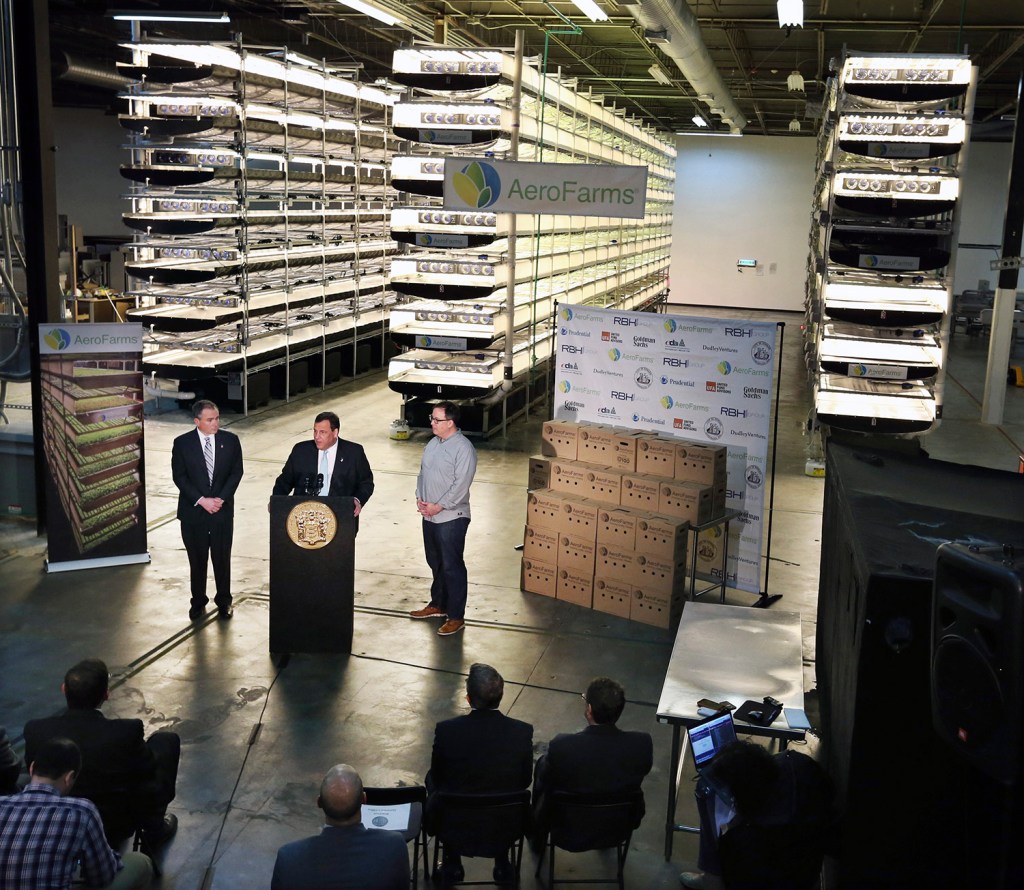NEWARK, N.J. — Stacks of leafy greens are sprouting inside an old brewery in New Jersey.
“What we do is we trick it,” said David Rosenberg, co-founder and chief executive officer of AeroFarms. “We get it thinking that, if plants could think: ‘All right, this is a good environment, it’s time to grow now.'”
AeroFarms is one of several companies creating new ways to grow indoors year-round to solve problems like the drought out West, frost in the South or other unfavorable conditions affecting farmers. The company is in the process of building what an industry group says is the world’s largest commercial vertical farm at the site of an old steel mill in New Jersey’s largest city.
It will contain 12 layers of growth on 3½ acres, producing 2 million pounds of food per year. Production is set to begin next month.
“We want to help alleviate food deserts, which is a real problem in the United States and around the world,” Rosenberg said. “So here, there are areas of Newark that are underprivileged, there is not enough economic development, aren’t enough supermarkets. We put this farm in one of those areas.”
The farm will be open to community members who want to buy the produce. It also plans to sell the food at local grocery stores.
Critics say the artificial lighting in vertical farms takes up a significant amount of energy that in turn creates carbon emissions.
“If we did decide we were going to grow all of our nation’s vegetable crop in the vertical farming systems, the amount of space required, by my calculation, would be tens of thousands of Empire State Buildings,” said Stan Cox, the research coordinator at The Land Institute, a nonprofit group that advocates sustainable agriculture.
“Instead of using free sunlight as we’ve always done to produce food, vertical farms are using light that has to be generated by a power plant somewhere, by electricity from a power plant somewhere, which is an unnecessary use of fuel and generation of carbon emissions.”
Cox says that instead of moving food production into cities, the country’s 350 million acres of farmland need to be made more sustainable.
But some growers feel agriculture must change to meet the future.
“We are at a major crisis here for our global food system,” said Marc Oshima, a co-founder and chief marketing officer for AeroFarms. “We have an increasing population that by the year 2050 we need to feed 9 billion people. We have increasing urbanization.”
Rosenberg also pointed out the speeded-up process.
“We grow a plant in about 16 days, what otherwise takes 30 days in the field,” he said.
Send questions/comments to the editors.



Comments are no longer available on this story